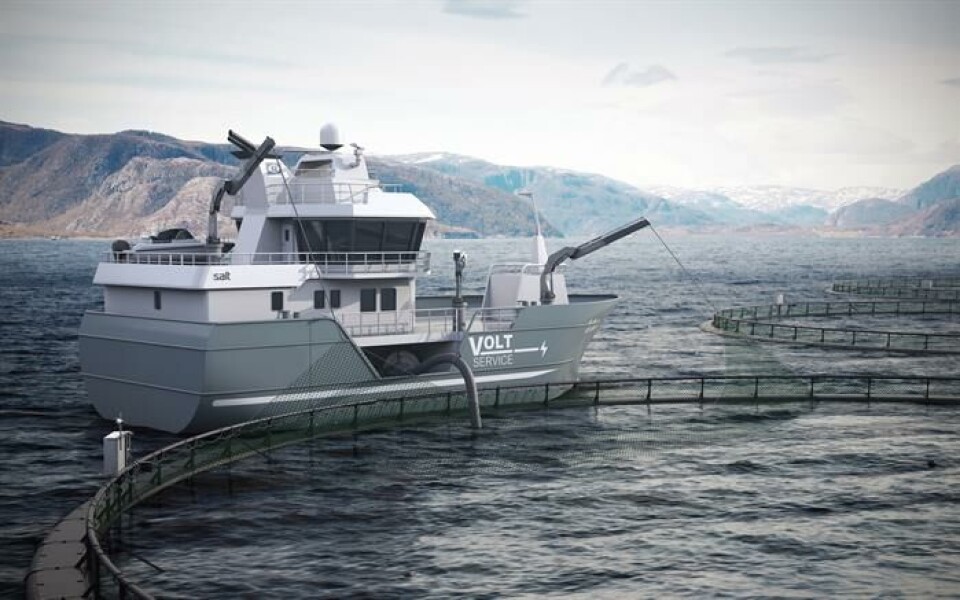
Remøy looks to Scotland for harvest boat customers
Norwegian service boat supplier Remøy Management has unveiled a new harvest vessel that it intends to offer to customers in Scotland as well as Norway.
The VOLT Harvest is designed by SALT Ship Design and is equipped with two stun and bleed lines and RSW (refrigerated sea water) tanks to cool the fish during transport to a processing facility.
Remøy operations manager Robert Søviknes said stun-and-bleed vessels offered advantages over transportation of live fish to processing plants by wellboat because no holding cages were required at the plants. This removed the risk of parasites or disease.

After the fish are stunned and bled at the grow-out site and transported to the processing plant, the fish can be discharged directly and continuously to the plant during production or discharged in a short time to an RSW tank on land.
No waiting time
The second option allows the factory to process at its own speed after the vessel has delivered the fish and is Remøy’s preferred method, as there is virtually no waiting time for the vessel and its utilisation can be higher.
Remøy says the pre-rigour phase of the fish slaughtered at the pen will normally be more than 30 hours, achieved because they are stunned and bled seconds after harvest and experience the minimum stress possible.
Søviknes, who established service provider VOLT Service AS in conjunction with Remøy in 2016, said there are stun-and-bleed boats in use in Scotland but is confident the VOLT Harvest will be able to compete when the boat is delivered in 2020. Three vessels are to be built to the same specification.
Higher quality fish
“This boat will be effective and there will be a very effective way to chill the fish on board. The efficiency and the quality will be higher,” he said.
Søviknes said the company doesn’t currently have any customers in Scotland but he had been talking to fish farmers and was also keen to find contracts for the delousing vessel VOLT Processor in the UK.
The 43-metre Processor was delivered by Dutch boat builder Damen in May and was immediately equipped with two Optilice 4 XL de-lousing systems which have a capacity of 200 tonnes of fish per hour, depending on the size of the fish, health status and other factors.
The system can use either lukewarm or cold water, so that resistance to a treatment type is not built up, and the vessel also has ballast cleaning systems and wastewater treatment.




















































